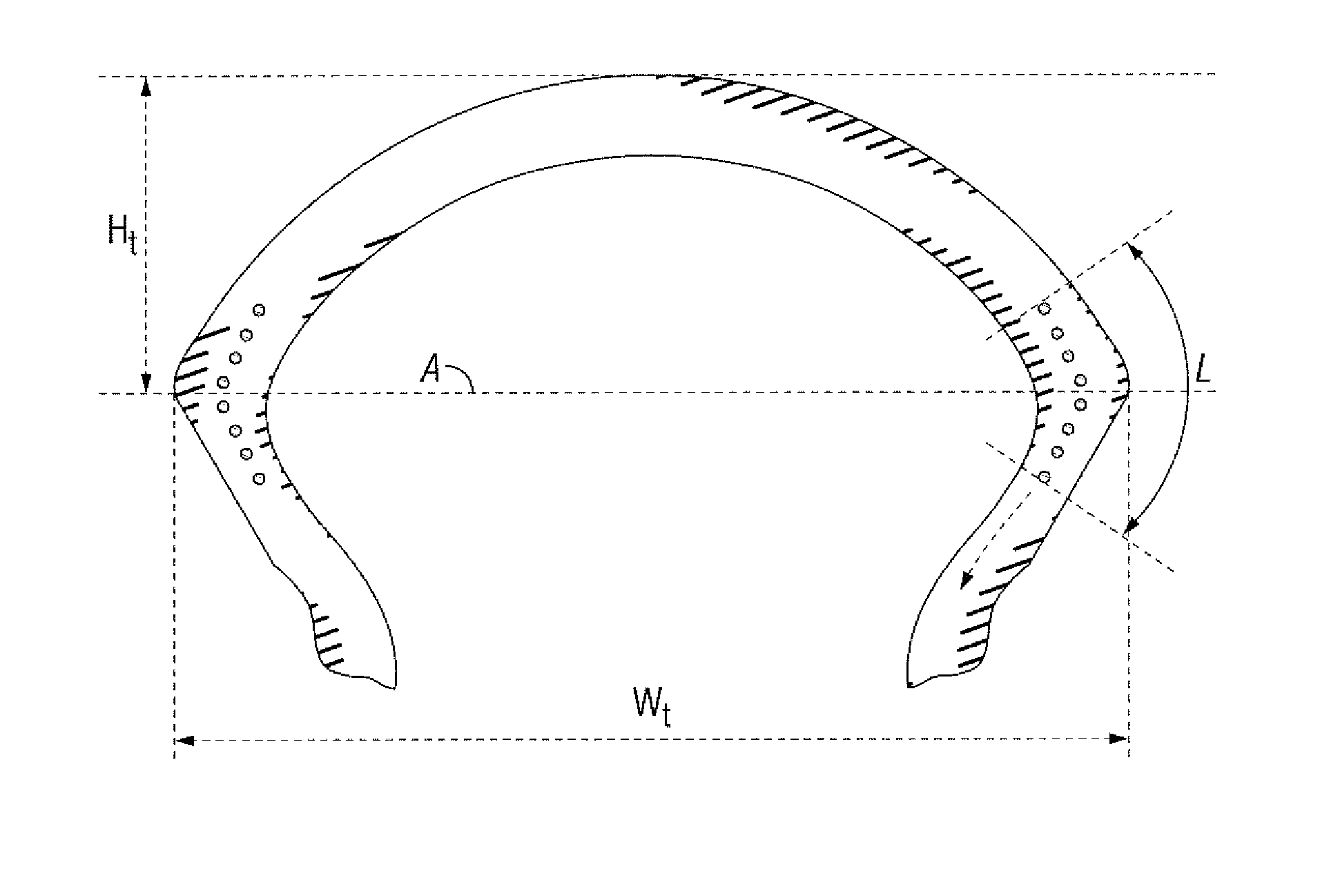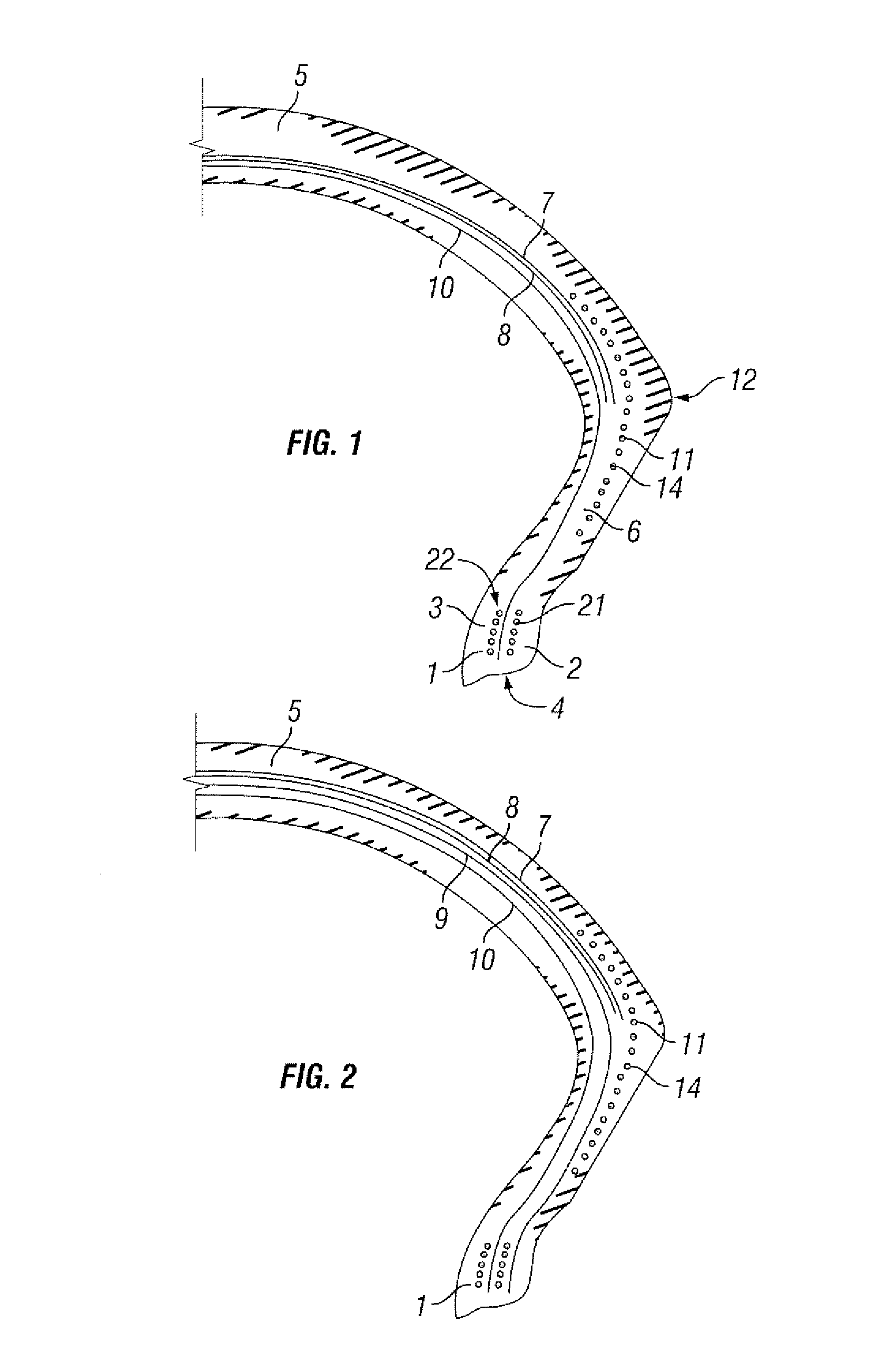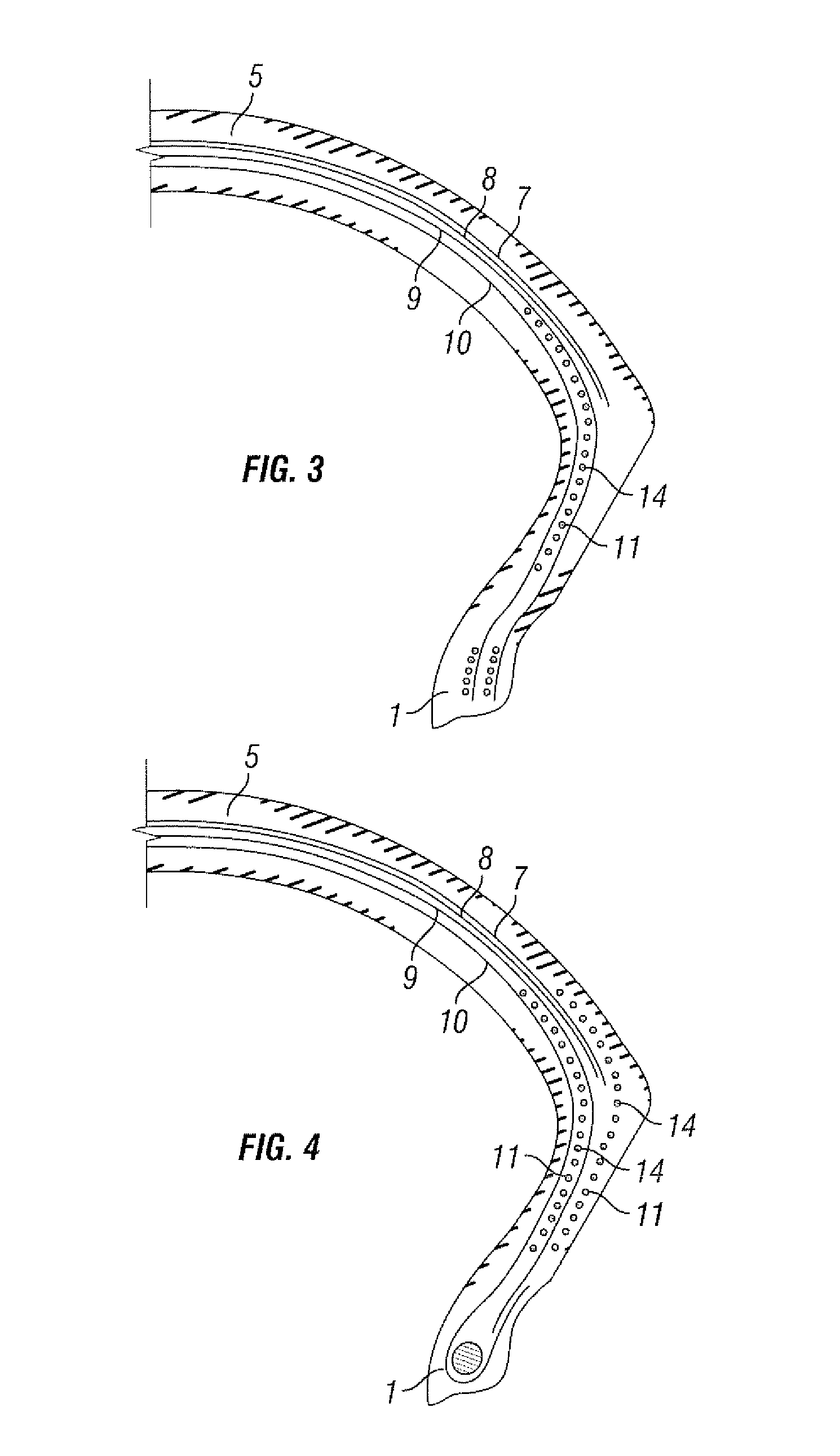Tire for two-wheeled vehicle comprising an anti-vibration means
a two-wheeled vehicle and anti-vibration technology, applied in the field of tires, can solve the problems of tire that does not have anti-vibration technology, different types of vibration, etc., and achieve the effect of improving performan
- Summary
- Abstract
- Description
- Claims
- Application Information
AI Technical Summary
Benefits of technology
Problems solved by technology
Method used
Image
Examples
Embodiment Construction
[0044]In the present specification, the term “cord” designates very generally both monofilaments and multifilaments, or assemblies such as cables, plied yarns or alternatively any type of equivalent assembly, and this, whatever the material and the treatment of these cords, for example surface treatment or coating or pre-sizing to promote adhesion to the rubber. “Radially outward” or “radially upper” means towards the largest radii. “Elasticity modulus” of a rubber mix is understood to mean a secant modulus of extension obtained at a uniaxial deformation of extension of the order of 10% at ambient temperature.
[0045]A reinforcement or reinforcing structure of carcass type will be said to be radial when its cords are arranged at 90°, but also, according to the terminology in use, at an angle close to 90°.
[0046]It is known in the prior art that carcass ply or plies is / are turned up about a bead wire. The bead wire then performs the function of anchoring the carcass, that is to say, tak...
PUM
| Property | Measurement | Unit |
|---|---|---|
| angle | aaaaa | aaaaa |
| angle | aaaaa | aaaaa |
| height | aaaaa | aaaaa |
Abstract
Description
Claims
Application Information
 Login to View More
Login to View More - R&D
- Intellectual Property
- Life Sciences
- Materials
- Tech Scout
- Unparalleled Data Quality
- Higher Quality Content
- 60% Fewer Hallucinations
Browse by: Latest US Patents, China's latest patents, Technical Efficacy Thesaurus, Application Domain, Technology Topic, Popular Technical Reports.
© 2025 PatSnap. All rights reserved.Legal|Privacy policy|Modern Slavery Act Transparency Statement|Sitemap|About US| Contact US: help@patsnap.com



